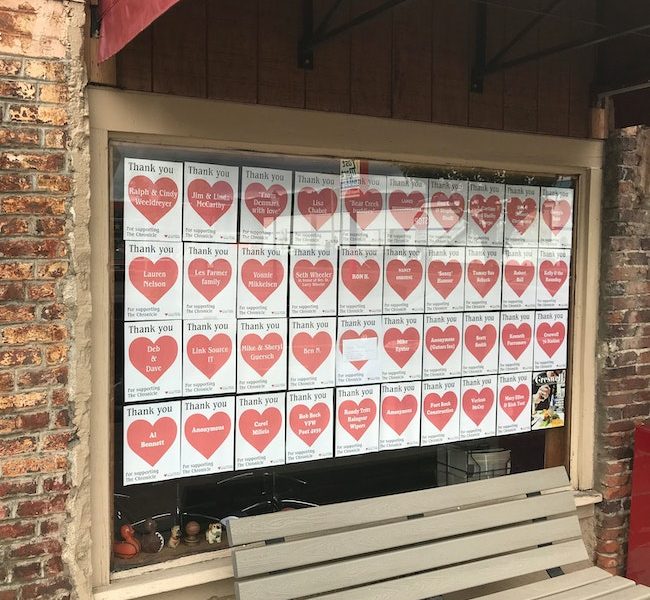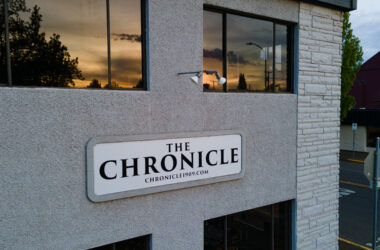
Note: This column was updated to reflect the exact name of The Cottage Grove Sentinel’s parent company, News Media Corporation. It operates more than 60 papers in eight states and has annual earnings of $50mm-$100mm, according to public reports.
Growing up and spending most of my life in the newspaper industry, I’ve been familiar with the outstanding reputations The Oregonian and Register-Guard have enjoyed for decades. When I crossed paths with former employees or people who had friends working at those papers, their experiences were consistently positive.
One of the reasons, I’m told with the benefit of hindsight, is that high-quality journalists from California could make virtually equal pay – and stretch their dollars significantly further in Oregon. More keen hindsight is that the owners of those papers were committed to serving readers.
Until they couldn’t afford to anymore. Ultimately, corporations and hedge funds had the pockets deep enough to acquire the newspapers’ brands, property and real estate, while stripping the “business” to its bones to maximize profits.
The motive is to generate the most money possible. Without judgment, it’s a business model.
It’s just not The Chronicle’s business model.
We certainly root for credible and trusted journalism anywhere. A rising tide lifts all boats, right?
We choose to serve and uplift our community.
Thinking critically – discerning truth and fiction and the shades in between – is among the most valuable leadership competencies. I recently came across an explanation first authored by Nathan Allebach, the 28-year-old social media manager for the Steak-Umm brand:
“Critical thinking is not a singular skill. It’s a constant state of … measuring evidence, and recognizing when to defer to experts. It’s analyzing this tweet’s substance, motivations, credibility, and source, not just reading it.
“Critical thinking isn’t what to think, it’s how to think. You may critically think about this tweet, but lower those defenses for the next one. Most people’s natural state is to seek or settle for whatever confirms their pre-existing beliefs (duh). Life’s more comfortable that way.”
Hmm. A little perspective from a frozen meat product. These are strange days indeed.
The point is you have a choice, one that requires critical thinking: Support corporate-owned papers filled with the news-as-commodity? Or support The Chronicle’s hyper-local vision.
This is not a knock on the fine people who work at other papers. In fact, I’m guessing they are self-aware that they work for the Eugene edition of Gatehouse/Gannett, based in Washington, D.C., and the Cottage Grove edition of News Media Corporation, based in Illinois.
The Chronicle? Well, we publish content from people you know. People you trust. Gini Davis and Pamela Farmer. Yaakov Levine and Dana Merryday. Pat Edwards. Erin Tierney and Aliya Hall. Jordan Cora Lampe. Joey Blum. Frank Armendariz. Linda LaZar. Familiar names? Darn right.
There are new names and faces, too. Chelsea Greenway handles much of our digital and social media platforms, and designed the Visitors and Newcomers Guide. Bradley Cook and Mike and Elsie Nordtvedt bring decades of professional photography to our storytelling.
Yep, these folks are your neighbors. They are not generic, faceless bylines on top of “wire” copy from some other place.
They are residents of the southern Willamette Valley, earnest folk, trying their best to provide news and information – and accurate, engaging storytelling – for you, the readers.
And it’s not just our staff that’s recognizable. You know the businesses who advertise in The Chronicle, because the vast majority of them are owned by – you guessed it – your neighbors. “Shop local” is not a marketing slogan; it’s the key to economic survival in rural and small towns.
A few weekends ago I was at a local business and there was a thin little newspaper in a plastic rain bag. I thought to myself, man, I’ve stuffed thousands of those in my lifetime. I was curious what paper that tiny, maybe thinner than The Chronicle, could afford to individually wrap papers in rain bags. I picked it up, surprised at its feather-like weight, and shook out the contents. It. Was. The. Register-Guard.
When I was a kid, I delivered the North Dade-South Broward Journal. A small weekly paper in Miami that covered neighborhoods in detail – stuff The Miami Herald was too big to touch. The Journal was never as small as the R-G I held in my hands that day.
Reputations. They take lifetimes to earn, and one greedy corporation to kill in seconds.
This is the 10th edition of The Chronicle since we first covered COVID-19. We stopped paying our correspondents after March, trying to survive the financial crisis.
You know what? We’ve never had so many stories and photos flowing in from our writers and photographers.
How are things with the R-G’s owners? Layoffs started two weeks ago at Gannett, which merged with GateHouse in late 2019 to become the largest newspaper chain in the U.S. with 261 newspapers in 46 states. Think that means more coverage of your community?
News Media Corp., meanwhile, publishes more than 60 papers in eight states. According to multiple websites, its earnings range between $50 million and $100 million annually, and there are more than 500 employees. It has a tax-deductible “donate” button on The Sentinel’s website.
Just the same as The Chronicle, right?
Noel Nash is publisher of The Chronicle.







